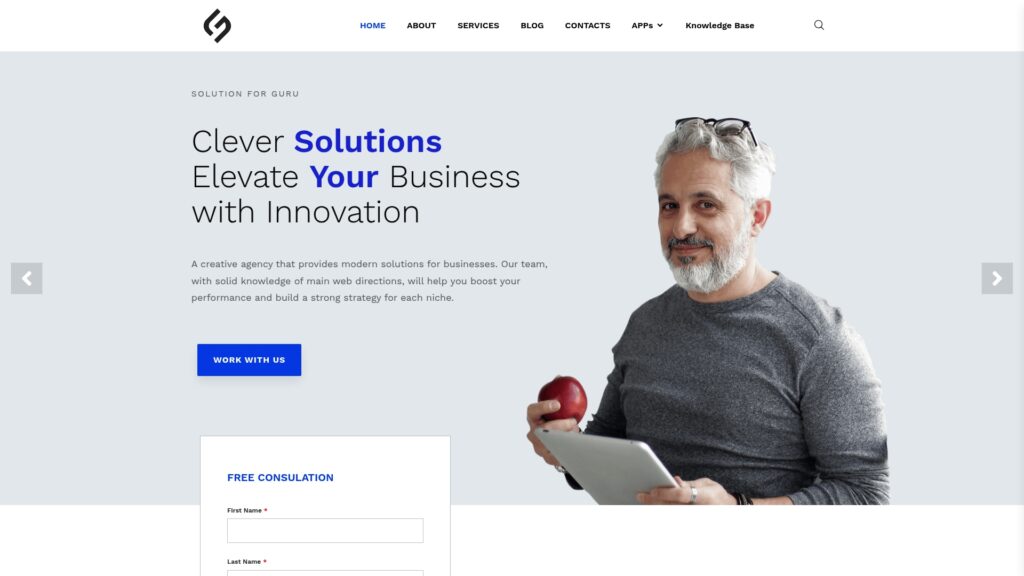The Future of Auto Insurance: How Technology Is Changing the Game?

The auto insurance industry stands at the threshold of its most dramatic transformation in over a century. Traditional insurance models built on demographic data and actuarial tables are rapidly giving way to sophisticated technological systems that monitor, predict, and respond to risk in real-time. From telematics devices tracking driving behavior to artificial intelligence processing claims in minutes rather than weeks, technology is fundamentally reshaping every aspect of how we buy, use, and benefit from auto insurance.
This technological revolution promises lower premiums for safe drivers, faster claims processing, more accurate risk assessment, and entirely new insurance products tailored to modern mobility patterns. As we move deeper into the digital age, understanding these transformative technologies becomes essential for consumers seeking the best coverage at optimal prices.
Table of Contents
- Quick Summary
- What Are New Technologies and How Do They Affect Auto Insurance?
- How Are Leading Insurers Adapting to Technological Change?
- What Is Telematics and How Does It Transform Insurance Pricing?
- How Is Artificial Intelligence Revolutionizing Claims Processing?
- What Role Do Connected and Autonomous Vehicles Play?
- How Are Mobile Apps Changing the Insurance Experience?
- Summing up
- Frequently Asked Questions
- Benefits of Cooperation with Solution for Guru
Quick Summary
Technology is revolutionizing auto insurance through telematics, artificial intelligence, connected vehicles, and data analytics. These innovations enable insurers to assess risk more accurately, process claims faster, and offer personalized pricing based on actual driving behavior rather than demographic assumptions. Companies like Progressive, BiBerk, Next Insurance, and Infinity Auto Insurance are leading this transformation by implementing cutting-edge technologies that benefit both insurers and policyholders.
Consequently, modern drivers now have access to usage-based insurance programs that reward safe driving with lower premiums, mobile apps that streamline policy management and claims reporting, and AI-powered systems that can settle simple claims within hours. Moreover, the emergence of autonomous vehicles promises to fundamentally restructure insurance models within the next decade.
Furthermore, these technological advances create opportunities for significant cost savings while simultaneously raising important questions about data privacy, algorithmic fairness, and the changing nature of personal responsibility in an increasingly automated world. Understanding these technologies empowers consumers to make informed decisions about their insurance coverage in this rapidly evolving landscape.
What Are New Technologies and How Do They Affect Auto Insurance?
The technological transformation of auto insurance encompasses multiple interconnected innovations that collectively reshape every aspect of the insurance value chain. These technologies fundamentally alter how insurers assess risk, calculate premiums, interact with customers, process claims, and even conceptualize the nature of coverage itself.
Core Technologies Transforming Insurance
Telematics and IoT Devices: Small devices installed in vehicles or smartphone apps monitor driving behavior including speed, acceleration, braking patterns, cornering, mileage, and time of day. This real-time data enables insurers to price policies based on actual driving habits rather than demographic proxies.
Artificial Intelligence and Machine Learning: AI algorithms process vast datasets to identify patterns, predict risk, detect fraud, automate claims processing, and personalize customer interactions. Machine learning systems continuously improve their accuracy by learning from new data and outcomes.
Connected Vehicle Technology: Modern vehicles transmit data directly to manufacturers and potentially to insurers, providing detailed information about vehicle health, usage patterns, accident circumstances, and maintenance needs. This connectivity enables proactive risk management and more accurate post-accident assessment.
Big Data Analytics: Insurers now analyze millions of data points from diverse sources—driving records, credit information, telematics data, weather patterns, traffic conditions, and demographic information—to create sophisticated risk profiles that far exceed traditional actuarial capabilities.
Blockchain and Distributed Ledgers: This technology promises to streamline claims processing, reduce fraud, facilitate data sharing among insurers, and create transparent, tamper-proof records of vehicle history and insurance coverage.
Mobile Technology: Smartphone apps provide instant access to policy information, enable photo-based claims reporting, offer roadside assistance coordination, and facilitate real-time communication between insurers and policyholders.
Impact on Insurance Business Models
These technologies collectively enable a fundamental shift from reactive to proactive insurance models. Traditional insurance responds after accidents occur, whereas technology-enabled insurance can predict and potentially prevent losses before they happen. This transformation manifests in several ways:
| Traditional Model | Technology-Enabled Model |
|---|---|
| Annual premium based on demographics | Dynamic pricing based on actual behavior |
| Claims processed in weeks | AI-assisted claims resolved in hours |
| Limited customer interaction | Continuous digital engagement |
| Broad risk pools | Highly segmented, personalized pricing |
| Reactive loss response | Proactive risk mitigation |
Moreover, technology democratizes access to better rates by allowing safe drivers to prove their low-risk status regardless of demographic categories that traditionally resulted in higher premiums. A young driver with excellent habits can now demonstrate their safety through telematics rather than being penalized solely for age.
Additionally, these innovations improve operational efficiency for insurers, reducing administrative costs that can translate into lower premiums for consumers. Automated claims processing, digital policy management, and AI-powered customer service reduce overhead while improving service quality.
Challenges and Opportunities
However, technological transformation presents challenges alongside opportunities. Data privacy concerns arise as insurers collect increasingly detailed information about driving habits and locations. Algorithmic bias risks emerge when AI systems inadvertently perpetuate historical discrimination patterns. Furthermore, the digital divide means some consumers may lack access to technology-based discounts available to others.
Nevertheless, the overall trajectory clearly points toward more accurate, fair, and efficient insurance systems. Companies that successfully navigate these challenges while leveraging technological capabilities will dominate the future insurance marketplace.
How Are Leading Insurers Adapting to Technological Change?
The insurance industry’s response to technological disruption varies significantly among companies, with some embracing innovation aggressively while others adopt more cautious approaches. Leading insurers recognize that technological adaptation is essential for long-term competitiveness and survival.
Progressive’s Technology Leadership

Progressive has established itself as an industry pioneer in insurance technology innovation, particularly in telematics and usage-based insurance. Their Snapshot program, launched in 2008, represents one of the earliest successful implementations of telematics-based pricing in the American market.
Progressive’s Snapshot technology monitors driving behavior through either a plug-in device or smartphone app, tracking factors such as hard braking, late-night driving, and total mileage. Based on this data, Progressive offers personalized discounts that can reduce premiums by up to 30% for the safest drivers. This program has enrolled millions of drivers and generated vast datasets that Progressive uses to continuously refine their risk models.
Furthermore, Progressive has invested heavily in artificial intelligence for claims processing and fraud detection. Their AI systems can analyze accident photos submitted through their mobile app to estimate repair costs with remarkable accuracy, often providing settlement offers within hours rather than the traditional days or weeks.
Additionally, Progressive’s digital infrastructure enables seamless customer experiences across web and mobile platforms. Their app allows policyholders to manage coverage, file claims, request roadside assistance, and track Snapshot data in real-time. This comprehensive digital ecosystem positions Progressive as a technology company that happens to sell insurance rather than an insurance company adopting technology as an afterthought.
BiBerk’s Digital-First Business Insurance

BiBerk represents a newer generation of insurers built specifically for the digital age, focusing on small business insurance including commercial auto coverage. Their technology-first approach streamlines traditionally complex business insurance processes into simple, efficient digital experiences.
BiBerk’s platform enables business owners to obtain commercial auto insurance quotes online within minutes, a process that traditionally required extensive paperwork and agent consultations. Their digital systems automatically assess business risk factors, vehicle information, and driver qualifications to provide instant pricing and coverage options.
Moreover, BiBerk leverages technology to make business insurance more accessible and understandable for entrepreneurs who may lack insurance expertise. Their educational resources, digital policy management tools, and simplified coverage explanations demystify commercial insurance while maintaining comprehensive protection.
Additionally, BiBerk’s technology enables them to serve small businesses efficiently at scale, reducing overhead costs that translate into competitive premiums. Their digital infrastructure handles everything from quote generation to policy issuance to claims processing with minimal manual intervention, creating efficiency advantages over traditional commercial insurers.
Infinity Auto Insurance’s Inclusive Technology Approach

Infinity Auto Insurance applies technology to serve diverse communities, including customers who may have limited credit histories or face challenges accessing traditional insurance markets. Their technological systems balance sophisticated risk assessment with inclusive underwriting that considers the full context of each applicant’s situation.
Infinity’s mobile app provides multilingual support, recognizing that their customer base includes many households where English isn’t the primary language. This technological accessibility ensures that language barriers don’t prevent customers from fully utilizing digital insurance tools.
Furthermore, Infinity employs technology to offer flexible payment options that accommodate diverse financial situations. Their systems support various payment schedules and methods, utilizing automated reminders and easy payment processing to help customers maintain continuous coverage even during financially challenging periods.
Additionally, Infinity’s claims processing technology emphasizes customer support alongside efficiency. While AI assists with initial claims intake and assessment, their system ensures that complex or confusing situations receive appropriate human attention, balancing technological efficiency with personal service.
Next Insurance’s AI-Powered Business Coverage

Next Insurance exemplifies the fully digital insurance carrier, built from inception around artificial intelligence and automated systems. Their platform serves small businesses exclusively online, with no traditional agents or physical offices, delivering business insurance including commercial auto coverage through entirely digital channels.
Next Insurance’s AI systems analyze business information to instantly assess risk and generate quotes without human underwriting in most cases. Their algorithms consider business type, location, revenue, employee count, vehicle details, and numerous other factors to provide accurate pricing within seconds.
Moreover, Next Insurance’s technology enables unprecedented transparency in pricing and coverage. Their platform clearly explains what factors influence premium costs and allows business owners to adjust coverage parameters to see immediate pricing impacts, empowering informed decision-making.
Additionally, Next Insurance continuously improves their AI models using machine learning techniques that identify patterns in claims data and business characteristics. This ongoing refinement enhances pricing accuracy and helps identify risk factors that traditional underwriting might miss.
Comparative Technology Adoption
The following table illustrates how these leading insurers employ key technologies:
This comparison demonstrates that while all major insurers employ technology, their specific implementations reflect different business models, target markets, and strategic priorities.
What Is Telematics and How Does It Transform Insurance Pricing?
Telematics represents one of the most significant technological innovations in auto insurance, fundamentally changing how insurers price policies by enabling measurement of actual driving behavior rather than relying on demographic proxies and statistical averages.
Understanding Telematics Technology
Telematics refers to systems that monitor and transmit vehicle data using telecommunications and informatics technologies. In insurance applications, telematics devices collect information about driving behavior, vehicle location, and usage patterns, then transmit this data to insurers for analysis.
Modern telematics implementations take several forms:
Plug-In Devices: Small units that connect to a vehicle’s onboard diagnostics (OBD-II) port, continuously monitoring driving behavior and vehicle performance. These devices directly access vehicle systems to gather precise data about speed, acceleration, braking, and other parameters.
Smartphone Apps: Mobile applications that use phone sensors (GPS, accelerometer, gyroscope) to monitor driving behavior without requiring separate hardware. These apps offer convenience and eliminate installation requirements but may be less precise than dedicated devices.
Built-In Vehicle Systems: Newer vehicles with factory-installed connected car technology can transmit telematics data directly to insurers through embedded systems, providing the most seamless integration without requiring additional devices or apps.
Data Collected by Telematics Systems
Telematics systems monitor various aspects of driving behavior, each providing insights into accident risk:
- Speed and Acceleration: Monitoring whether drivers exceed speed limits and how aggressively they accelerate
- Braking Patterns: Tracking hard braking frequency, which indicates following too closely or inattentive driving
- Cornering Behavior: Measuring how sharply drivers turn, indicating aggressive or cautious driving styles
- Time of Day: Recording when vehicles are driven, as late-night driving correlates with higher accident risk
- Mileage: Tracking total distance driven, since more driving exposure increases accident probability
- Location Data: Identifying where vehicles are driven, allowing assessment of area-specific risks
How Telematics Changes Pricing Models
Traditional insurance pricing relies heavily on demographic factors—age, gender, marital status, location—because these characteristics correlate statistically with accident rates. However, this approach treats individuals as members of groups rather than assessing their specific risk profile.
Telematics enables personalized pricing based on measured behavior. A young male driver who demonstrates consistently safe habits through telematics can access rates comparable to lower-risk demographic groups, while a middle-aged driver with poor habits may face higher premiums despite belonging to a traditionally low-risk category.
Progressive‘s Snapshot program exemplifies this transformation. Enrolled drivers receive discounts based on their actual driving performance rather than demographic assumptions. Progressive’s data shows that safe drivers regardless of age or other traditional rating factors present lower risk than statistics might suggest, and telematics allows them to identify and reward these individuals.
Benefits of Telematics for Consumers
Telematics programs offer multiple advantages beyond potential premium discounts:
Transparency: Drivers understand exactly what factors influence their rates and can take specific actions to improve them
Behavioral Improvement: Studies show that drivers enrolled in telematics programs often improve their habits, knowing they’re being monitored, creating a safety benefit beyond insurance pricing
Fair Pricing: Individuals aren’t penalized for demographic characteristics they can’t control but instead are rated on behaviors they can modify
Immediate Feedback: Many programs provide real-time feedback about driving performance, helping drivers identify and correct risky habits
Accident Assistance: Some telematics systems automatically detect accidents and can dispatch emergency services or notify insurers immediately
Implementation Challenges
Despite significant benefits, telematics adoption faces several obstacles:
Privacy Concerns: Many consumers feel uncomfortable with insurers tracking their location and driving habits continuously, viewing it as invasive surveillance
Technology Barriers: Some demographics, particularly older drivers, may struggle with smartphone apps or resist adopting new technology
Data Accuracy: Smartphone-based systems sometimes misattribute driving behavior when passengers use phones in moving vehicles or incorrectly classify certain driving situations
Adverse Selection: The safest drivers preferentially enroll in telematics programs to capture discounts, while risky drivers avoid them, potentially skewing insurer data and limiting program effectiveness
The Future of Telematics
Telematics technology continues evolving rapidly. Next-generation systems will likely incorporate:
- Enhanced Risk Assessment: Integration with weather data, traffic conditions, and road quality information to provide context for driving behavior
- Predictive Maintenance: Monitoring vehicle health to identify potential mechanical failures before they cause accidents
- Dynamic Pricing: Real-time premium adjustments based on current driving conditions and behavior
- Coaching and Intervention: Active systems that provide warnings when detecting dangerous driving patterns, potentially preventing accidents rather than merely pricing risk after they occur
Furthermore, as connected vehicle technology becomes standard in new cars, telematics will transition from optional programs requiring special devices to default features of comprehensive insurance coverage. This ubiquity will make personalized, behavior-based pricing the norm rather than the exception.
How Is Artificial Intelligence Revolutionizing Claims Processing?

Artificial intelligence represents perhaps the most transformative technology in insurance operations, particularly in claims processing where AI dramatically reduces costs, accelerates resolution times, and improves customer satisfaction while maintaining or improving accuracy.
Traditional Claims Processing Challenges
Historically, insurance claims processing involved labor-intensive manual work: adjusters reviewing damage, estimating repair costs, detecting fraud, negotiating settlements, and processing paperwork. This process typically required days or weeks, frustrated customers awaiting resolution, and generated significant operational costs for insurers.
Moreover, human claims processing inevitably introduced inconsistency. Different adjusters might assess identical situations differently, creating fairness concerns and potential legal issues. The subjective nature of damage assessment and settlement decisions meant outcomes varied based on which adjuster handled particular claims.
AI-Powered Claims Transformation
Artificial intelligence addresses these challenges through multiple applications:
Automated Damage Assessment: AI algorithms analyze photos of vehicle damage submitted through mobile apps, identifying specific damaged components and estimating repair costs with remarkable accuracy. These systems train on millions of previous claims to recognize damage patterns and cost implications.
Fraud Detection: Machine learning models identify suspicious claim patterns by analyzing vast datasets of historical claims, flagging unusual combinations of circumstances, inconsistent information, or patterns associated with previous fraud cases. These systems detect subtle indicators that human reviewers might miss.
Natural Language Processing: AI chatbots and virtual assistants handle initial claim intake, answering policyholder questions, gathering necessary information, and routing complex cases to appropriate human specialists. These systems operate 24/7, providing immediate response regardless of when accidents occur.
Predictive Analytics: AI systems predict likely claim outcomes based on historical patterns, helping insurers make informed settlement decisions and identify cases requiring special attention or investigation.
Document Processing: Optical character recognition (OCR) and natural language processing automatically extract relevant information from police reports, medical records, repair estimates, and other documents, eliminating manual data entry and reducing processing time.
Progressive’s AI Implementation
Progressive has invested heavily in AI-driven claims processing, developing sophisticated systems that handle many straightforward claims with minimal human intervention. Their mobile app allows policyholders to photograph vehicle damage immediately after accidents, with AI systems analyzing these images to provide preliminary damage assessments within minutes.
Progressive’s AI doesn’t replace human adjusters entirely but rather augments their capabilities. Simple, straightforward claims can be handled almost entirely through automated systems, while complex cases receive appropriate human expertise. This hybrid approach combines efficiency with quality, ensuring customers receive fast service without sacrificing accuracy or fairness.
Additionally, Progressive uses AI for fraud detection, analyzing claim patterns to identify suspicious activities. Their systems flag potentially fraudulent claims for detailed human investigation, allowing adjusters to focus their expertise where it matters most while routine claims proceed efficiently.
Next Insurance’s End-to-End AI Systems
Next Insurance built their entire platform around artificial intelligence from inception, creating fully digital claims experiences for their small business customers. Their AI systems guide business owners through claims submission, automatically assessing damage or loss, and often providing settlement offers without human claims adjuster involvement.
Next Insurance’s approach works particularly well for smaller commercial claims where rapid resolution matters more to business owners than maximizing settlement amounts. A small business that needs a damaged delivery vehicle repaired immediately to continue operations values fast payment more than lengthy negotiations over a few hundred dollars of repair costs.
Moreover, Next Insurance’s AI continuously learns from claims outcomes, improving accuracy over time. When their automated assessments prove inaccurate, the system incorporates this feedback to refine future predictions, creating a self-improving claims operation.
BiBerk and Infinity’s Balanced Approach
BiBerk and Infinity Auto Insurance employ AI to improve efficiency while maintaining strong human support for customers who prefer personal interaction or face complex claim situations. Their systems use AI for initial intake, damage assessment, and fraud screening, but ensure human adjusters remain readily available.
This balanced approach recognizes that not all customers feel comfortable with fully automated claims processing, particularly when dealing with significant accidents or confusing situations. The technology handles routine aspects efficiently while human expertise addresses nuanced circumstances requiring judgment and empathy.
| Aspect | Traditional Processing | AI-Enhanced Processing |
|---|---|---|
| Simple claim resolution time | 5-14 days | Hours to 2 days |
| Customer effort required | Extensive documentation, multiple contacts | Photo submission, minimal interaction |
| Processing costs | $500-$1,000+ per claim | $200-$500 per claim |
| Consistency | Varies by adjuster | Highly consistent |
| Fraud detection rate | 10-15% of fraud caught | 25-35% of fraud caught |
| Customer satisfaction | Moderate (long waits) | High (fast resolution) |
These improvements benefit both insurers through reduced costs and customers through faster, more convenient claims experiences.
Ethical and Practical Considerations
Despite clear advantages, AI claims processing raises important questions:
Algorithmic Bias: If AI systems train on historical data reflecting past biases, they may perpetuate discrimination even without explicit bias in their programming
Transparency: Black-box AI systems that can’t explain their decisions create fairness concerns when customers don’t understand why claims were denied or settlements offered at particular amounts
Error Handling: Fully automated systems may struggle with unusual situations falling outside their training data, potentially making inappropriate decisions without human oversight
Employment Impact: Automation reduces need for human claims adjusters, raising concerns about job displacement in insurance industry
Consequently, responsible AI implementation requires ongoing monitoring for bias, transparency about when and how AI makes decisions, clear paths for human review when customers dispute automated outcomes, and thoughtful workforce transition planning.
The Autonomous Vehicle Insurance Transformation
Fully autonomous vehicles will revolutionize insurance more dramatically than any previous technology:
Liability Shift: When vehicles drive themselves, accidents result from vehicle system failures rather than driver error, shifting liability from drivers to manufacturers or technology providers
Product Liability Focus: Auto insurance may evolve from primarily liability coverage to primarily product liability coverage, with manufacturers insuring their technology rather than drivers insuring their behavior
Dramatically Reduced Accidents: If autonomous vehicles fulfill their safety promise, accident frequency could drop 80-90%, shrinking the entire auto insurance market
New Coverage Needs: Cybersecurity insurance protecting against vehicle hacking, software liability coverage for AI decision-making, and technology failure coverage will become necessary
Current Impact of ADAS Features
Even current semi-autonomous features affect insurance significantly. Vehicles equipped with automatic emergency braking, blind-spot monitoring, and lane-keeping assistance have measurably lower accident rates than those without these technologies.
Consequently, insurers increasingly offer discounts for vehicles with advanced safety features. Progressive, BiBerk, Infinity Auto Insurance, and Next Insurance all consider vehicle safety technology when calculating premiums, rewarding drivers who choose vehicles with collision avoidance systems.
Timeline for Autonomous Vehicle Impact
The insurance transformation from autonomous vehicles will occur gradually:
| Timeframe | Technology Level | Insurance Impact |
|---|---|---|
| 2024-2028 | Level 2-3 widespread adoption | Modest premium reductions for equipped vehicles |
| 2028-2033 | Level 3-4 in controlled environments | Partial liability shift begins; specialized AV policies emerge |
| 2033-2040 | Level 4-5 becoming common | Significant market contraction; major shift to manufacturer liability |
| 2040+ | Level 5 dominance | Personal auto insurance radically transformed or largely eliminated |
This gradual transition gives insurers time to adapt their business models, but the ultimate destination – a much smaller personal auto insurance market—seems increasingly inevitable.
Insurer Preparation for AV Future
Forward-thinking insurers prepare for the autonomous future through several strategies:
Product Innovation: Developing new insurance products for autonomous vehicle technology, manufacturer liability coverage, and shared mobility services
Diversification: Expanding into other insurance lines less threatened by autonomous vehicles, such as homeowners, life, and specialty business insurance
Data Capabilities: Building advanced analytics and AI capabilities to assess new types of risks associated with vehicle software and systems
Partnership Development: Establishing relationships with automakers, technology companies, and mobility service providers to position for future insurance opportunities
BiBerk and Next Insurance, with their focus on business insurance, may be somewhat insulated from autonomous vehicle disruption since commercial vehicles will likely automate more slowly than personal vehicles. However, they still prepare for eventual impacts on their commercial auto products.
How Are Mobile Apps Changing the Insurance Experience?

Mobile applications have transformed insurance from an annual interaction when policies renew to an ongoing digital relationship providing continuous value and engagement. This transformation fundamentally changes customer expectations and insurer capabilities.
Evolution of Insurance Mobile Apps
Early insurance apps simply provided digital versions of insurance cards and basic policy information. Modern insurance apps offer comprehensive features that handle nearly every aspect of policy management and claims processing:
Policy Management: View coverage details, make payments, update personal information, add or remove vehicles or drivers, and adjust coverage limits
Digital Insurance Cards: Store proof of insurance digitally, accepted by law enforcement and accident parties in most states
Claims Submission: Report accidents immediately through in-app forms, submit photos of damage, track claim status, and communicate with adjusters
Roadside Assistance: Request towing, battery jumps, fuel delivery, or lockout service with GPS-enabled location sharing
Accident Scene Assistance: Step-by-step guidance on what to do after accidents, including police contact, information collection, and witness documentation
Telematics Integration: Monitor driving behavior scores, view trip data, and track progress toward usage-based insurance discounts
Progressive’s Comprehensive Mobile Platform
Progressive‘s mobile app exemplifies comprehensive insurance app functionality, offering all features mentioned above plus additional capabilities like their Name Your Price tool and ability to compare competitors’ rates. Their app integrates seamlessly with Snapshot telematics, providing real-time feedback on driving behavior and discount progress.
Moreover, Progressive’s app uses AI-powered chatbots to answer common questions instantly, reducing wait times for customer service while handling routine inquiries efficiently. When human assistance is needed, the app facilitates smooth transfers to appropriate representatives with full context of the customer’s situation and app interaction history.
Additionally, Progressive’s app includes educational content about insurance coverage, safety tips, and guidance on maximizing discounts—transforming the app from a transactional tool to a comprehensive insurance resource.
BiBerk’s Business-Focused Mobile Tools
BiBerk tailors their mobile app specifically for small business owners managing commercial auto insurance. Their app recognizes that business owners need quick access to certificate of insurance documents for contracts, fast addition or removal of vehicles from policies, and efficient claims reporting that minimizes business disruption.
Furthermore, BiBerk’s mobile platform integrates with other business tools and systems, allowing busy entrepreneurs to manage insurance alongside other business responsibilities rather than treating it as a completely separate domain requiring dedicated attention.
Infinity Auto’s Accessibility Features
Infinity Auto Insurance emphasizes accessibility in their mobile app design, recognizing their diverse customer base includes many households with limited English proficiency. Their app offers multiple language options, clear visual design that transcends language barriers, and voice-enabled features for customers with literacy challenges or visual impairments.
Additionally, Infinity’s app includes flexible payment features accommodating various financial situations, with easy scheduling of payments, automated reminders, and multiple payment method options. These features help customers maintain continuous coverage even during financially challenging periods.
Next Insurance’s Digital-Native Platform
Next Insurance operates entirely through digital channels, making their mobile app central to the customer experience rather than a supplementary tool. Business owners obtain quotes, purchase policies, manage coverage, and submit claims entirely through the app without ever speaking to an agent.
Next Insurance’s app design emphasizes simplicity and speed, recognizing that small business owners value efficiency above all else. The app guides users through complex insurance decisions with clear explanations and smart defaults, making it possible to secure appropriate coverage in minutes rather than hours.
Key Mobile App Features Comparison
Impact on Customer Behavior and Expectations
Mobile apps change customer expectations in fundamental ways:
Instant Gratification: Customers expect immediate responses to questions, instant policy changes, and rapid claims processing rather than accepting days or weeks of waiting
24/7 Access: The expectation that insurance services should be available anytime, anywhere, not just during business hours
Transparency: Customers want clear visibility into policy details, pricing factors, claims status, and how decisions are made
Control: Preference for self-service capabilities over agent-mediated processes, with customers wanting to manage policies on their own terms and schedules
Integration: Expectation that insurance apps integrate seamlessly with other digital tools in customers’ lives rather than existing as isolated silos
Insurers unable to meet these elevated expectations risk losing customers to competitors offering superior digital experiences.
Future Mobile App Innovations
Next-generation insurance apps will likely incorporate:
- Augmented Reality: AR-guided accident scene documentation, damage assessment assistance, and repair shop navigation
- Predictive Assistance: Proactive notifications about potential risks based on weather, traffic, or vehicle condition
- Ecosystem Integration: Seamless connections with smart home systems, connected vehicles, digital payment platforms, and other services
- Personalized Recommendations: AI-driven suggestions for coverage adjustments, discount opportunities, and risk management based on individual circumstances
- Social Features: Ability to share insurance recommendations with friends, coordinate group coverage for families, or compare experiences with other customers
These innovations will continue blurring the line between insurance apps and comprehensive digital assistants managing broader aspects of customers’ mobility and risk management needs.
Summing up
The technological transformation of auto insurance represents one of the most significant shifts in the industry’s history. From telematics and usage-based insurance to artificial intelligence, connected vehicles, and mobile apps, these innovations collectively reshape every aspect of the insurance experience.
Progressive stands at the forefront of this revolution, having pioneered mainstream usage-based insurance through Snapshot and continuing to push boundaries with advanced AI claims processing and sophisticated data analytics. Their technology leadership demonstrates that embracing innovation creates competitive advantages while delivering tangible benefits to customers.
BiBerk brings digital-age efficiency to small business insurance, making commercial auto coverage accessible and understandable for entrepreneurs through technology-enabled platforms that provide instant quotes and simplified management tools.
Infinity Auto Insurance demonstrates that technology can serve diverse communities inclusively through multilingual mobile apps, flexible payment systems, and balanced approaches combining digital innovation with traditional service channels.
Next Insurance exemplifies the fully digital insurer, using artificial intelligence and automated systems to provide instant business insurance quotes and claims processing entirely online, proving that comprehensive services can be delivered effectively through digital channels.
Ultimately, technology transforms insurance not for its own sake but to better serve fundamental purposes: providing financial protection at fair prices while promoting safety. The remarkable technologies emerging succeed because they make insurance more accessible, affordable, accurate, and valuable.
For consumers, understanding these technologies empowers better decisions. Whether enrolling in usage-based programs, using mobile apps, or choosing insurers with matching capabilities, informed consumers benefit most from the insurance technology revolution.
The future of auto insurance is fundamentally human—using advanced tools to understand and serve individual needs, creating fairer systems that protect people while respecting privacy, and making mobility safer and more accessible. This future is actively being built today by companies like Progressive, BiBerk, Infinity Auto Insurance, and Next Insurance.
Frequently Asked Questions
Telematics systems use several technologies to monitor driving behavior. Plug-in devices connect to your vehicle’s OBD-II port and directly access vehicle systems reporting speed, acceleration, and braking. These devices contain GPS receivers and cellular radios transmitting data to insurers.
Smartphone-based telematics apps use built-in sensors – GPS for location and speed, accelerometers for detecting acceleration and braking, and gyroscopes for measuring turns. These apps run in the background while you drive, automatically detecting trips and recording relevant data.
Newer vehicles with factory-installed connected car systems can transmit telematics data directly to insurers through embedded cellular connections without requiring separate devices or apps. While telematics tracks location as part of mileage recording, most insurers don’t retain detailed location histories indefinitely—they aggregate data into risk-relevant metrics like total mileage and time-of-day patterns.
Artificial intelligence will significantly change insurance agent roles but is unlikely to completely eliminate human agents. Instead, AI will handle routine transactions while human agents focus on complex situations requiring judgment and empathy.
For straightforward insurance needs, AI systems already provide excellent service, offering instant quotes and processing routine policy changes more efficiently than humans. Companies like Next Insurance demonstrate that purely digital, AI-powered insurance works well for these situations.
However, complex scenarios benefit from human expertise: drivers with unusual circumstances, businesses with specialized coverage needs, customers facing claim complications, or situations requiring creative problem-solving. AI struggles with unusual situations outside their training data.
Furthermore, many customers value personal relationships with agents. Insurance involves important financial decisions and potentially stressful situations where human empathy matters beyond technical assistance.
Benefits of Cooperation with Solution for Guru
Navigating the rapidly evolving insurance technology landscape requires expertise extending beyond understanding individual products to comprehending how different innovations interact and which options best serve your circumstances. This is where partnering with Solution for Guru (https://www.solution4guru.com/) delivers substantial value.

In an insurance landscape increasingly defined by complex technologies, Solution for Guru (https://www.solution4guru.com/) serves as your expert guide and advocate. Their comprehensive understanding of insurance technology, relationships with leading carriers like Progressive, BiBerk, Infinity Auto Insurance, and Next Insurance, and commitment to customer-focused service ensure you benefit from technological innovation without being overwhelmed by complexity.
Whether you’re seeking to maximize savings through usage-based insurance, want to understand how AI affects claims processing, need to evaluate digital-first versus traditional insurers, or simply want expert guidance navigating the modern insurance marketplace, Solution for Guru provides the expertise and support necessary for success.
Contact Solution for Guru today to discover how their technology-aware insurance guidance can help you secure optimal coverage at the best available prices while leveraging modern innovations that make insurance more convenient, affordable, and responsive to your needs. In the rapidly changing world of insurance technology, having an expert partner makes all the difference between confusion and confidence, between overpaying and optimizing, between frustration and satisfaction.
Recommended
- Full Coverage vs. Liability: Which Auto Insurance Is Right for You?
- What’s Covered and What’s Not: Breaking Down Auto Insurance Coverage Types
- What Are the Best Auto Insurance Options for Rideshare Drivers (Uber, Lyft, etc.)?
- How to Get Affordable Auto Insurance After an Accident or Ticket
- Auto and Renters Insurance Bundle
- Preferred Auto Insurance Companies
- How to Get Auto Insurance Online
- Auto Insurance for Farms
- Auto International Insurance
- Comparing Commercial Auto Insurance
- The Top Commercial Auto Insurance Options



